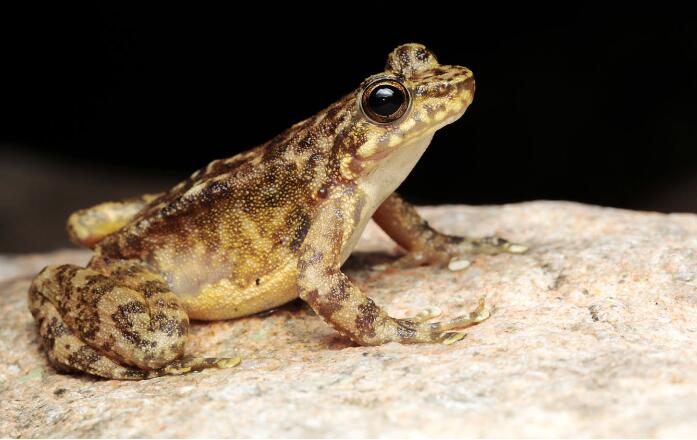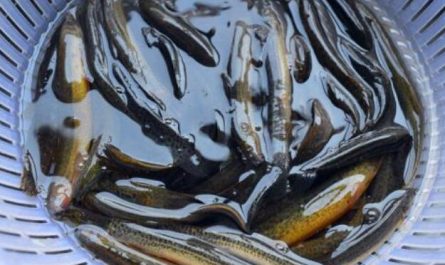The reason why the male frog’s call is so loud
In summer, you can often hear frogs whine by the pond, in the rice field, and by the ditches. Especially during the breeding season, the male frog screamed loudly by the water, and the female frog rushed to hear the sound, and the two hugged tightly. Female frogs lay their eggs in the water, and male frogs lay their sperm in the water. The eggs and sperm are fertilized in the water.
The reason why the male frog’s call is so loud is related to the structure of its mouth. In the depths of the frog’s mouth, there is a gap called the “throat”. There are two vocal cords in the throat. When the gas rushes out of the lungs, it vibrates the vocal cords and produces sound. There are a pair of sound sacs on both sides of the male frog’s mouth corners. The sound of the sacs resonates with the sound of the vocal cords. What is the use of the frog’s big mouth? People are very familiar with the sound of frogs.
Normally, when the male frog is not whining, the two whining sacs contract and it is not easy to find. It protrudes when whining. The two sacs of frogs and frogs are connected together to form a centered sac. When vocalizing, it can swell as big as the body.
There is a kind of frog in South America. The male frog has a very large singing sac and many frog eggs are hidden inside. These frog eggs develop here, and when they are mature, they jump out of the father’s mouth. There is also a red frog whose two sacs can suddenly inflate when whining. It is said to be used to scare off the enemy.
Frogs mainly feed on agricultural pests. Whether it is a flying moth, a jumping locust, a rice hydrangea hiding in a leaf roll, a cotton bollworm that burrows into a boll, or a mole cricket hiding in a cave, as soon as they come out, the frog will catch it immediately. Live them.
According to statistics, a frog can kill 17,000 pests every year if it catches insects for 7 months a year.
The meaning of frog croaking
Zoologists have discovered that different frog sounds have different meanings. In summer, male frogs make loud chirps, which represent courtship signals; frogs make deafening chirps when dividing territories, indicating that they are very controversial. According to research, the frog relies on a pair of vocal cords in the throat to produce sound. If the vocal cords are tightened by the surrounding muscles and cartilage, the air will vibrate
Species classification of frogs
Although frogs have venomous glands in their skin, these toxins generally do not protect frogs from predation by mammals, birds, and snakes. Edible frogs are protected by camouflage. Some types of body color blend with the background, while others can change their body color. Some species have bright colors on the lower part of the body, and the bright lower part of the body when the frog moves is dazzling, and its meaning may be to confuse the enemy. Most frogs eat insects, others eat small arthropods or worms, but some frogs also eat other frogs, rodents and reptiles.
Common frogs in farmland include black spotted frog, red frog, golden thread frog, flowerback toad and so on. The Cuban bullfrog can be regarded as a “giant” among frogs, with a body length of up to 20 cm. Its moo-moo sound resembles a bull cry, so it is called a bullfrog.
The reproductive characteristics of frogs
The reproductive characteristics of frogs are dioecious, fertilized in water, and are oviparous. The breeding time is about mid to late April each year. In the process of reproduction, frogs have a very special phenomenon-hug. What needs to be explained is that frogs’ hugs are not mating, but only a link in the reproductive process. Studies have shown that if male and female frogs are artificially separated (that is, there is no process of hugs), then even in frog reproduction During the period, female frogs cannot shed eggs either. It can be seen that the biological significance of holding pairs is mainly through holding pairs, which can promote female frogs to ovulate. Generally, frogs lay eggs and fertilize in the water. After the eggs hatch, they become tadpoles, live in the water, and then become young frogs landing activities.
However, the method of laying eggs of tree frogs is different. The eggs produced by the spot-legged tree frogs are like a mass of white soap foam or a mass of cream, sticking to the plants. The most interesting is the Emei tree frog, which lays egg masses on the leaves near the water. The eggs develop in the egg masses, and then fall into the lake to continue to develop. It is also like a piano frog with a pleasing sound, it will build a mud nest before laying eggs, and then lay the eggs in it. Some frogs belonging to tree frogs do not climb trees, but live in water. Some tree frogs, such as the red-webbed tree frog and the black-webbed tree frog, have wide webs between their fingers and toes, and they can glide from high branches to low places, so they are also called flying frogs. In addition to tree frogs, there are tree frogs and frogs with suckers. Among them, the turbulent frogs are more special. They like to live in turbulent waters and can swiftly cross rapids and climb rocks. The tadpoles of the turbulent frog are also very peculiar. It has a suction cup on its abdomen, which can be attached to the rock so as not to be washed away by the rapids. The “bearded” toad is a rare frog unique to our country. It was first discovered in Mount Emei and later in several southern provinces. The snout of this frog is wide and flat, and the male upper jaw has 12-16 horny black spines, so it is called bearded toad. The functions of these “beards” are still under research. There are many kinds of frogs, but no matter which kind, they mainly feed on pests.






